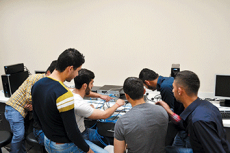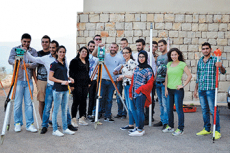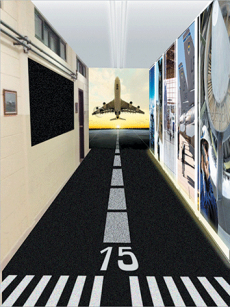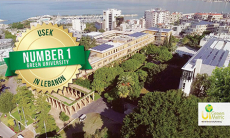Let’s talk about Architecture!
What is an architect?
An architect is someone who uses creativity and a practical understanding of structures and materials to develop concepts, plans, s p e c i f i c a t i o n s and detailed drawings for buildings and other structures. She/ he negotiates with builders and planning authorities, administers building contracts, and inspects the work carried out.
Who can be an architect?
Not anyone who likes design can be an architect. Architecture requires a distinctive taste in design maximized by a creative flair and a large deal of patience! That, with a bit of good communication skills here and a few problem solving skills there, and you are ready to go! Well, a good understanding of history, culture or environment doesn’t hurt either!
Got your B.Arch, what’s next?
Wait until you obtain your Bachelor of Architecture (B.Arch) to see the array of opportunities that await you! That’s what you would love to hear right? But no, it’s not as easy. It takes more time to prove yourself and draw the industry’s attention to your talents. What comes after obtaining your B.AR is called “harvesting experience”.
You will try different occupations related to Architecture until you find the one where you fit the most in. Some of these occupations could be Architectural Technician, Building Contractor, Building Surveyor, Interior Designer, Landscape Architect, Quantity Surveyor, and Urban and Regional Planner. Once you’ve tried, you will know exactly what you want to spend the rest of your life doing. That’s where your passion path starts from …
Looking for a good educational background in Architecture?
Lebanese universities have a lot (of projects) to give you. You can find just the kind of inspiration that you need at many of the Lebanese universities, to name a few: AUB, LAU, NDU and UOB.
The degree requirements in architecture at the American University of Beirut (AUB) consist of 174 credits. At the Lebanese American University, (LAU) the program consists of 172 credits. And
While it takes only 5 years to obtain a BA in Architecture from the two mentioned universities, it requires one more year in NDU and UOB. At Notre Dame University, the student has to complete 182 credits. At the University of Balamand, it’s only 158 credits.
If you’d like to know more about what a major in Architecture is really like, Bassem Alwan and Christine Elias, two passionate and assiduous students at the ALBA School of Architecture, Balamand University have plenty to tell you!

Globe: Why architecture?
Christine: I always loved arts, especially design. I also love mathematics or more particularly, geometry. Architecture happens to bring my two passions together!
Bassem: I love arts and all that have to do with it. My eyes are ones that appreciate beauty in its slightest details. This refined observation is what really led me to Architecture.
Globe: Is there a difference between a major in Architecture and one in Interior Architecture and Design?
Christine: Yes, of course. Interior Architecture is concerned only with the inside of a room or building, like the lights, the colors, and the materials used. The interior architect works only on the inside in a way that conforms to the outer shape.
Bassem: An architect’s scope of work is more general. His/her work involves tasks like making a plan, determining the volume and shape of a complex, and dividing the rooms according to the orientation of the sun and the wind. So it’s mainly focused on the façade more than the interior of the thing.
Globe: In what way do you think Architecture serves the society?
Christine: In fact, Architecture is one way to reflect our identity. When you go into a new city, the first things you see are the buildings around. The first impression these buildings give you is what creates the city’s image in your head. Therefore, architecture is a way to reflect our identity and culture.
Bassem: Exactly, if the city is carefully designed, you will get the impression of a well-organized, conscientious and civilized society whereas if it’s not, you will immediately know that you’ll be having some trouble with the locals.
Looking at it from a different angle, Architecture is really an explicit manifestation of our lifestyles. Some like modern apartments while others prefer the old traditional stone houses. With the help of an architect, each gets to live in the place she/he loves.
Globe: Can you describe the life of an architect student in 3 words?
Bassem: Work, work, and work.
Christine: Yes, indeed. It’s not easy at all. It needs a lot of effort, and a great deal of research and creativity.
Globe: What advice would you give to students considering a major in Architecture?

Christine: Love what you do, pour your heart into it, and don’t let the pressure stop you!
Bassem: Yes, you need to be really patient. You will be under a lot of pressure. However, don’t give up! Relax, take it easy and everything will be okay. A rich cultural background is also extremely helpful. Therefore, don’t complain when someone tells you that you should study the history and theories of Architecture. You really need it.
Globe: The most inspiring courses you’ve taken so far?
Bassem: “Theory of Architecture” and “The History of Art”. In Theory of Architecture, we learnt about all the concepts, theories, and approaches related to Architecture. It was very helpful. In the History of Architecture, we learnt how to read works of art and appreciate the art in them.
Christine: These are two of the best courses I’ve taken so far too. Some students don’t realize how important it is to learn about these theories and concepts, but without them, they can’t make any progress That is why they really need them …
Globe: What are some of the challenges a typical architecture student faces during his/her education?
Bassem: Mainly, deadlines and all the pressure and stress they bring along. Expressing your ideas and dealing with the doctors is also challenging most of the times, especially when each has a different vision then you’ll have to reconcile both visions together, not only stick to your idea as it is. Besides, it’s not easy to come up with new ideas and concepts. It takes a lot of time and research. The student has to be persevering and should take his/ her studies seriously if she/he wants to overcome all these challenges.
Christine: The challenge in Architecture is to create maximum impact with minimum effort. It’s about finding the best solutions to make the most attractive designs with the least amount of resources possible. That’s challenging!
Widad Samman






















